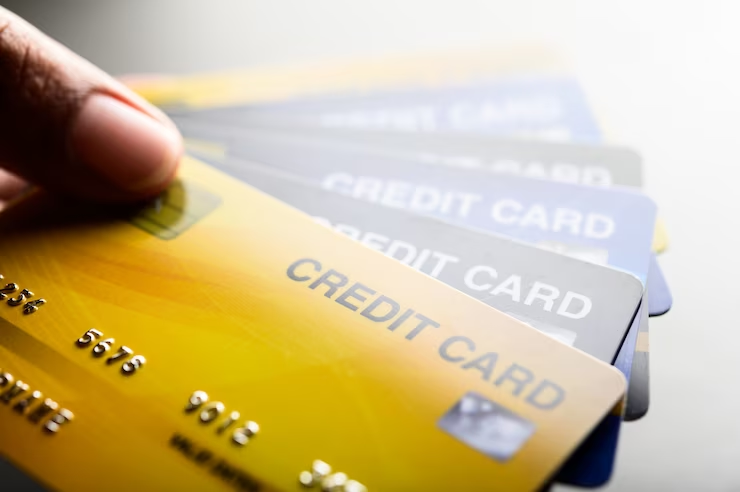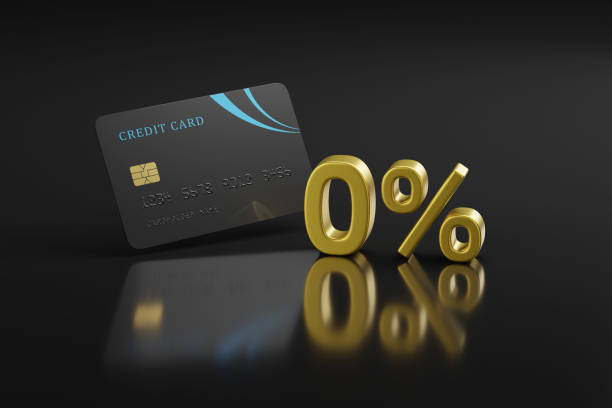Credit Tip Tuesday #122-What Are The Different Types Of Credit Cards And Their Benefits

Image Credits: Freepik
Credit cards have become a ubiquitous part of modern society, offering us the convenience of cashless transactions and the ability to make purchases even when we do not have the funds at that moment.
However, with so many credit cards available in the market, it can be overwhelming to choose the right one for your needs. That's why we have put together this informative post to help you make an informed decision when selecting a credit card.
In this post, we will discuss the various types of credit cards and their benefits. So, if you are ready to learn about the different types of credit cards and their benefits, keep reading!
1. Travel Rewards Credit Cards

Image Credits: iStock
Travel rewards credit cards are a popular type of credit card that offer rewards points or miles that can be redeemed for travel-related expenses such as flights, hotels, rental cars, and more. These credit cards typically earn more points or miles on travel-related purchases, and some even offer additional perks like airport lounge access or free checked bags.
The benefits of Travel Rewards Credit Cards are:
● Earn Free Travel
You can earn free travel. By using your credit card for travel-related purchases and everyday expenses, you can accumulate points or miles that can be redeemed for flights, hotels, and other travel-related expenses.
● Travel Perks
Many travel rewards credit cards offer additional perks like airport lounge access, free checked bags, and priority boarding. These perks can make your travel experience more comfortable and enjoyable.
● Sign-Up Bonuses
Many travel rewards credit cards offer sign-up bonuses, a great way to earn many points or miles quickly. These bonuses often require a minimum spend within the first few months of opening the account.
● Flexibility
Unlike some rewards programs that limit you to specific brands or retailers, travel rewards credit cards often offer more flexibility. You can redeem your points or miles with various airlines, hotels, and rental car companies, giving you more options and flexibility when planning your travel.
2. Cash Back Credit Cards

Image Credits: iStock
Cash back credit cards are a popular type of credit card that offer cash back rewards on purchases. These credit cards typically earn a percentage of cash back on purchases made with the card, which can add to significant savings over time.
Now, we will discuss the perks of using a cash back credit card.
● Cash Back Rewards
Depending on the card, you can earn anywhere from 1-5% cash back on purchases made with the card, which can add up to significant savings over time.
● Easy To Redeem
Cash back rewards are typically easy to redeem, with many cards offering the ability to redeem rewards as statement credits or cash back deposits into your bank account.
● No Annual Fee Options
Many cash back credit cards offer no annual fee options, making them an excellent choice for those who want to earn rewards without paying additional fees.
● Bonus Categories
Some cash back credit cards offer bonus categories that earn even more cash back on specific purchases, such as groceries, gas, or dining out.
● Additional Perks
Some cash back credit cards also offer additional perks such as extended warranties, purchase protection, and travel accident insurance.
3. Balance Transfer Credit Cards

Image Credits: iStock
Balance transfer credit cards are a type of credit card that allows you to transfer your existing credit card debt to a new credit card with a lower interest rate. The purpose of balance transfer cards is to save you money on interest charges, which can add up over time and make it difficult to pay off your debt.
Some of the advantages of Balance Transfer Credit Cards include:
● Lower Interest Rates
The primary benefit of a balance transfer credit card is the lower interest rate. By transferring your balance to a card with a lower interest rate, you can save significant money on interest charges.
● Consolidate Debt
If you have multiple credit card balances, you can consolidate them into one balance transfer card. This can make it easier to manage your debt and reduce the monthly payments you need to make.
● No Interest For An Introductory Period
Many balance transfer credit cards offer an introductory period with no interest. This can allow you to pay down your debt without incurring additional interest charges.
● Rewards Programs
Some balance transfer credit cards offer rewards programs, which can help you earn cash back or points for your purchases. This can be a great way to offset the cost of your debt.
● Improve Credit Score
You can improve your credit score by paying down your debt on a balance transfer card. This is because your credit utilization ratio will decrease, which is a factor that affects your credit score.
4. Low-Interest Credit Cards

Image Credits: iStock
Low-interest credit cards are credit cards that offer a lower interest rate than standard credit cards. The interest rate is the amount the credit card issuer charges when a balance is carried over from one month to the next. Low-interest credit cards typically have an Annual Percentage Rate (APR) of 15% or lower, whereas standard credit cards can have 20% or more APRs.
There are several benefits associated with Low-Interest Credit Cards, including:
● Cost Savings
Low-interest credit cards can save you money on interest charges. If you carry a balance on your credit card, a low-interest rate can significantly reduce the interest charges you pay each month.
● Debt Reduction
Low-interest credit cards can help you reduce your credit card debt more quickly. By paying less interest charges, you can pay more towards lowering your balance.
● Credit Score Improvement
Consistently paying off your balance on a low-interest credit card can help improve your credit score. This is because credit utilization, the amount of credit you use compared to your credit limit, is a factor in determining your credit score. With a low-interest credit card, you can keep your credit utilization low, positively impacting your credit score.
● Balance Transfers
Some low-interest credit cards offer balance transfer options, which can be helpful if you have high-interest credit card debt. Transferring your balance to a low-interest credit card can save money on interest charges and pay off your debt more quickly.
5. Secured Credit Cards

Image Credits: Freepik
Secured credit cards are a type of credit card that requires a security deposit to be put down to use the card. The deposit acts as collateral and helps protect the issuer if the cardholder does not pay their bills. Secured credit cards are an excellent option for individuals trying to build or rebuild their credit score, as well as those with a poor credit history.
Also read: Reasons to Get a Plastk Secured Credit Card
Getting a secured Credit Card has several advantages, including:
● Building Credit History
One of the main benefits of secured credit cards is their ability to help individuals build their credit history. With a secured credit card, the cardholder can make purchases and pay them off promptly, which can help to improve their credit score over time.
● Low Risk
Secured credit cards are low-risk for issuers, as the security deposit acts as collateral if the cardholder does not pay their bills. This means that even if the cardholder defaults on their payments, the issuer can still recoup their losses through the security deposit.
● Higher Credit Limits
Secured credit cards often come with higher credit limits than unsecured credit cards for individuals with poor credit scores. This is because the issuer has the security deposit as collateral, which reduces their risk.
● Ease of Approval
Secured credit cards are easier to get approved for than unsecured credit cards. This is because the security deposit reduces the issuer's risk, making it easier for individuals with poor credit histories to obtain credit.
6. Student Credit Cards

Image Credits: iStock
Student credit cards are credit cards that are specifically designed for college students who are new to credit or are looking to establish a credit history. These cards have lower credit limits and are easier to obtain than traditional ones. They also come with unique features such as cash back rewards, lower interest rates, and no annual fees.
Having a student credit card has numerous benefits like:
● Building Credit History
Student credit cards are an excellent way for students to start building a credit history. Making on-time payments and using the card responsibly can help students establish good credit scores.
● Lower Interest Rates
Student credit cards usually have lower interest rates compared to traditional credit cards. This is a significant benefit for students with little disposable income.
● Rewards And Cash back
Student credit cards often come with cash back rewards for purchases made on the card. This can be an excellent way for students to earn back money on purchases they were planning to make.
● No Annual Fees
Many student credit cards do not charge annual fees, which is an excellent perk for students on a tight budget.
Summary
So there you have it - a rundown of the different types of credit cards and their benefits. Credit cards come in all shapes and sizes, and each one has unique features that can be beneficial depending on your financial goals and lifestyle.
On the one hand, the benefits of using a credit card include convenience, rewards and perks, building credit history, and fraud protection. However, remember, with all the advantages come some potential drawbacks, like high-interest rates and fees.
So, which type of credit card is right for you? Do some research, compare your options, and read the fine print. And if you are ready to apply, go ahead and take the plunge!
With the right credit card in your wallet, you will be on your way to a world of rewards and benefits.


